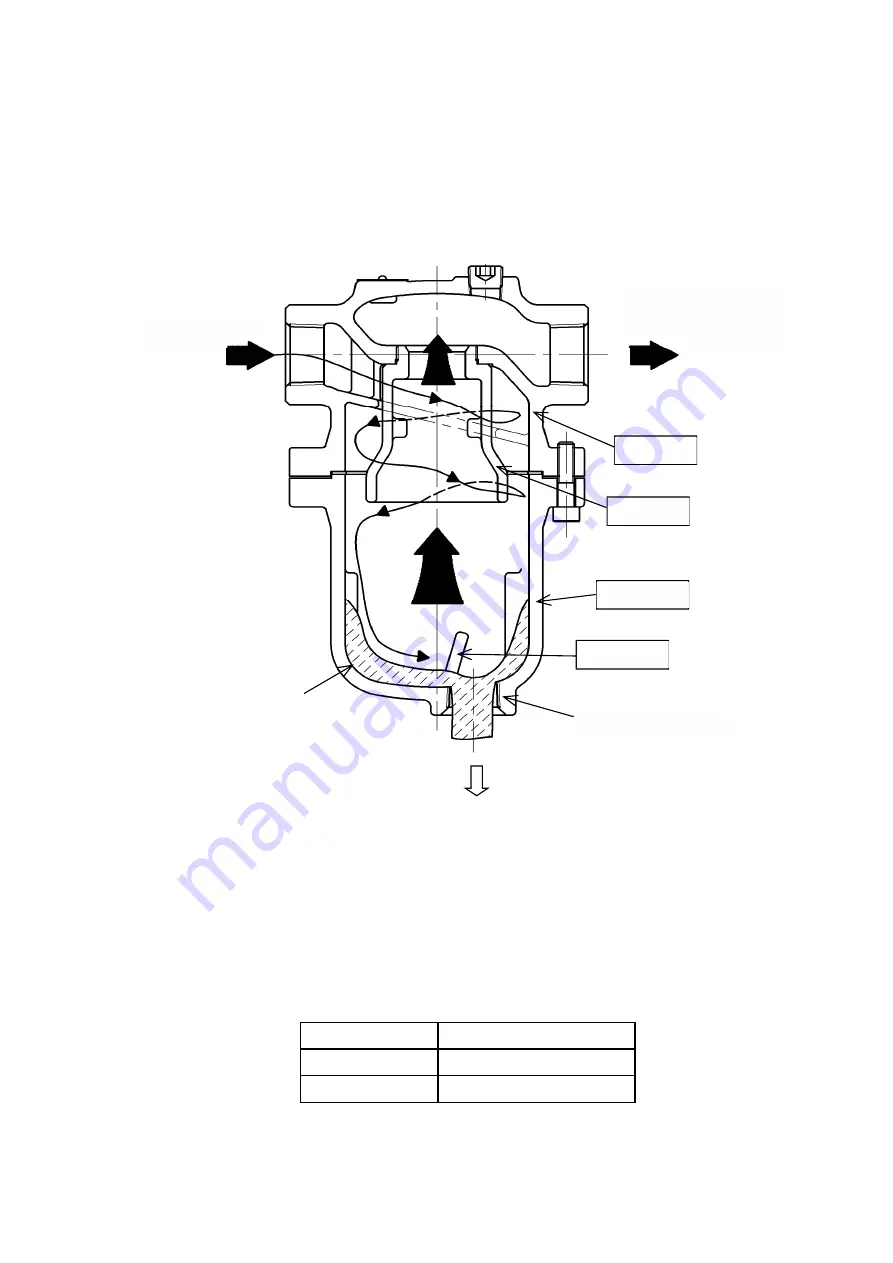
5 EPDT-192b
[Figure 3]
Steam or air
Receiver
Nozzle
Drain discharge port
Body
Drain
Clean and dry
steam or air
Baffle
4. Operation
The steam or air flow is subjected to a centrifugal force when it enters the drain separator. As soon as
steam or air flows into the drain separator, centrifugal force starts to work by the internal structure of the
body. Condensate swirls along the wall surface in consequence of the difference in specific gravity
between it and the steam or air, and strikes against the baffle. The condensate is then guided to discharge
port, while clean and dry steam or air flow to the outlet side through the nozzle.
5. Selection of nominal size
To make the best use of the drain separator and satisfy the operating requirements to the maximum,
take notice of the following.
[Selection of nominal size]
Select a nominal size equivalent to that of the pipe (piping nominal size = nominal size of drain
separator). Note that the use of a smaller nominal size increases the pressure loss through the drain
separator, possibly causing inadequate pressure at equipment inlet.
Table 1: Maximum flow velocity
Fluid
Maximum flow velocity
Steam
30 m/s
Air
15 m/s
*Use drain separator at less than maximum flow velocity.
*If flow velocity is too fast, the drain separator cannot function satisfactorily.





























